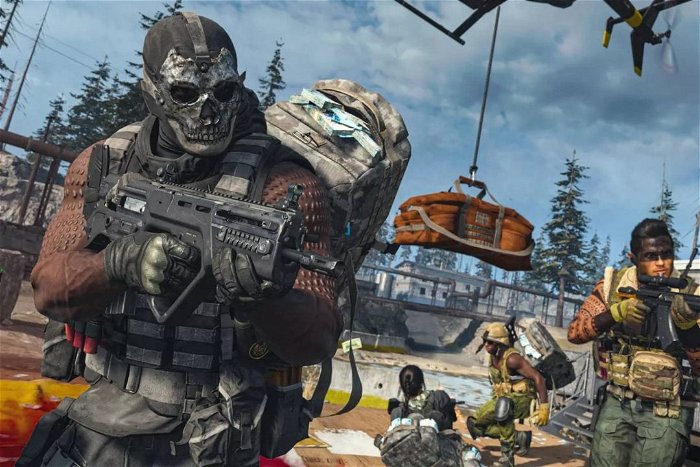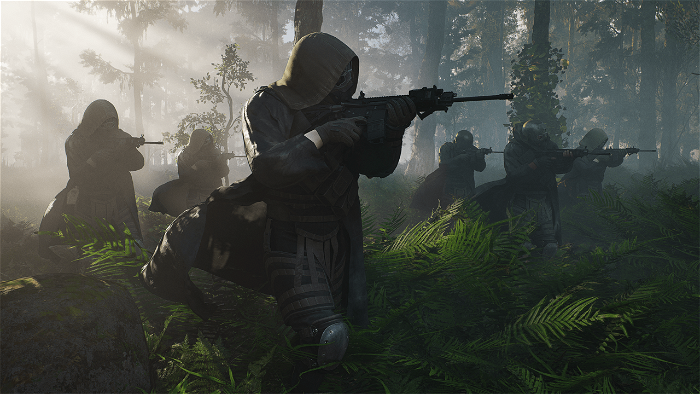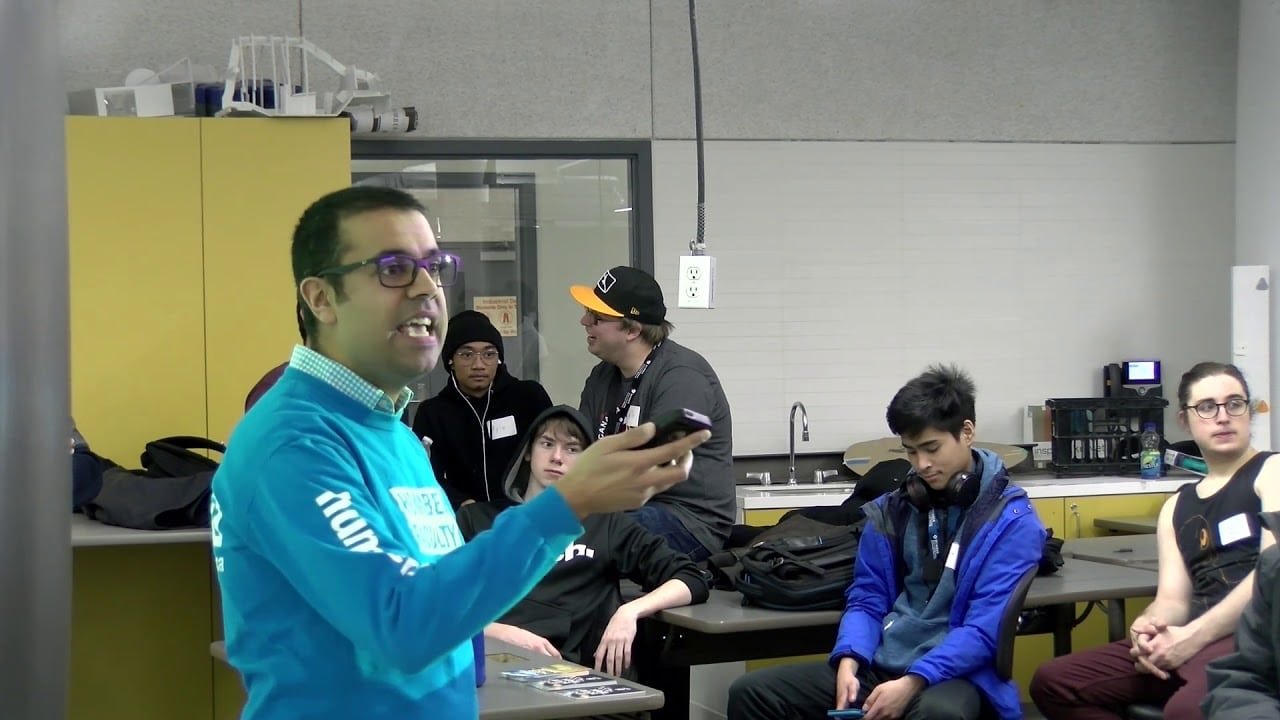CGMagazine takes the discussions of “crunch” to a Game Programming professor while learning about how the next generation of developers are bracing for impact.
Video game crunch is becoming a larger topic for the industry as more developers share news of delays online. While some gawk at the sight of later releases, others send comments of appreciation for the developers working longer weeks to polish a product. The extended (allegedly unpaid) shifts, pileup of bugs and player expectations are enough to make the most trusted studios wear down.
Our first part revisited the meaning of “crunch” as a period where game studio staff are heavily invested in finishing a game project, traditionally near the last months before launch. As excited players bide their time, developers start to crack during this phase. They become at risk for damages to mental health, a healthy work-life balance and even marriages (in one case, a group of spouses spoke out for Rockstar San Diego staff working overtime for Red Dead Redemption in 2010).
For Humber College Game Programming professor Umer Noor, not much has changed from seeing students come and go into an ever-evolving industry. Through a background in computers, math and physics, Noor entered the games industry through its educational side in 2008. Now a coordinator, he continues to teach students how to build games from another perspective while guiding them through their earliest crunches before employment in some of Canada’s own studios such as Ubisoft, Gameloft and Bioware.
We spoke to Umer Noor about how his game students become aware of “crunch” ahead of time and how deadlines can impact a developer’s life.
CGMagazine: Has video game crunch grown over the past decade or so?
Umer Noor: I’m not sure if it’s changed much. Maybe the scope of some of the games has got bigger and bigger, especially the massively multiplayer online games, much bigger player bases. And actually, one thing that has changed is patches. Day one patches, downloadable content DLCs. So one thing that has changed in the last 10 years is when a company releases a game, that’s not the end of it. Like they don’t just release a CD and that’s a job done. They see the feedback from the players. Maybe there are some like game ending bugs they have to fix, and then they try to keep the engagement levels by releasing downloadable content. So yeah, actually maybe in that way, maybe crunch has increased because the amount of dedicated time on a game increases even after the game is released.
CGMagazine: What have class discussions around game delays and crunch time looked like?
Umer Noor: In our program is quite a technical program. So we focus on programming the math, the physics, but we have a few courses where we talk about the big picture in the industry. We’ve got a game concept course in first semester, a capstone, a midstone. But I do want the students to know what they’re getting into in the industry. They have so much passion, like their dreams are to work for these big studios or run their own studio. And you get so caught up in in the day to day what needs to get done, that it’s good for them to know, like, what is happening across the industry. So I’m really glad people are talking about crunch.

CGMagazine: Do students in game programming go through some form of crunch themselves?
Umer Noor: Yeah, well, it’s kind of like in any program where there are like final projects due, assignments due, it’s easy to leave them to the last minute and then yet, they would be working on it a long, long time. And also with making games, you never really feel like you’re done. One thing we talked about in the program is scope, like how many features or mechanics are going in a game. And when you’re brand new to game programming, it’s easy to think you’re going to make the next big thing and it’s going to be multiplayer, it’s going to be online, it’s going to be in 3D. So we do talk a lot about reducing scope, like, have like maybe one core mechanic, and just polish the hell out of that, and make it the best you can.
Keep it small, and we encourage them like sleep, like take breaks. A lot of times, the best ideas come to you when you’re at home watching TV or in the shower. But I mean, we can say this in the classroom. But when it comes to industry, these students, they want jobs, they want to impress their bosses, they want to impress the teammates. So I could see how crunch is like, how it’s hard for students to avoid. It does depend on where the industry goes at this point.
CGMagazine: Is “crunch” something that students feel like they need to be prepared for ahead of time while they’re still training here?
Umer Noor: Yeah, it’s something that definitely comes up. I mean, you see they’re exhausted by the end of the semester when all the assignments have piled up on them. So yeah, we do talk about time management and spacing things out. We try to organize our courses so that not everything is due at the end of the semester. We try to have a lot of stuff at the start throughout. But it’s one of those things that it’s easy to overlook how horrible crunch is. When you’re young as a student, you’re like “I’m excited about this, I’m gonna go all in.” So I feel like sometimes you need some of that personal experience of like going through something that’s a little bit like crunch just to realize this isn’t a good thing. That’s not a good way to look. It’s just hard for us to convey that to the students, without them actually going through something that’s a little bit like crunch for them to realize those lessons.
CGMagazine: Do game programmers experience the same forms of crunch compared to other people in a team if they’re in the game development studio?
Umer Noor: Typically, a game studio has like a whole bunch of programmers, some game designers, some artists, people looking on sound audio and producers. So yeah, it’s a diverse team. I would say the programmers have it pretty hard. Because if the game designer decides they want to change up something, that’s a lot of work on the programmers to get that up and going. There has to be a lot of communication between programmers and artists as well. If artists give models to the programmers that don’t render at like 60 frames per second, that’s a big issue. They need to communicate on that. So yeah, crunch is definitely across the team. The game-ending bugs would go to the programming team. If the game just crashes and no one knows what’s going on, the programmers would need to get on top of that, like asap. So yeah, they would feel that (crunch) for sure.
CGMagazine: As students are assigned a project in school, they would only have 14 weeks across the semester. But don’t game studios have way longer times than 14 weeks?
Umer Noor: Oh, yeah. Yeah depends on the type of game. Like the big AAA studios like Ubisoft, they would probably have a development time of a few years. I would imagine. The smaller mobile studios, the ones targeting mobile devices, maybe the life cycle is like six months. We do kind of encourage students to maybe stick with 2D games, which are a little easier to polish and get out the door. If they focus on a 3D game, the amount of work that needs to go in increases exponentially. You need 3D assets. You need to make sure your physics and math is working in 3D. It really depends what kind of game it is.

CGMagazine: And while some students could be getting used to working in a 14 week setting, how much does that change when they go into a real studio after graduation and have a project that takes three, four or five years?
Umer Noor: Yeah, they would definitely be learning on the job. For sure. I think they would need to learn the culture of the studio. They need to ask lots of questions. We went to a faculty get-together at Ubisoft Toronto. And one of the things they talked about for the new grads in the studio is that they didn’t ask enough questions. They thought students felt like they couldn’t ask questions. Maybe they felt embarrassed. So I think the most important thing is just to talk to people (developers), figure out what you need to do, what kind of schedule you need to go with, kind of fit in with the expectations of the managers. Definitely, communicate for sure.
And actually something we’re kind of doing in our program is the students start thinking about their final project much earlier. The students are talking about “Yeah, they, they actually started working on their game last year,” so I guess that’s why they’re so stressed at this point. They really wanted something that would wow the crowds when they show it off And it’s not going the way they want, and it really gets them down. They want to focus on something else. But we do try to extend the development time in our program as well as talk to them.
CGMagazine: At the start of our chat you mentioned game patches, meaning a project wouldn’t end as soon as it goes gold. Could game patches be a way to alleviate some of this game crunch for studios?
Umer Noor: Yeah, that’s a tough one. A lot of times these big studios have hard dates they have to hit and they are scrambling to hit that date. And they finally push something out. But then they got a little bit of time to fix up what they pushed out then that would be the “Day One Patch”. As soon as you’re on your console and you’re downloading this massive in-game download you have to do on top of everything. So I’m not too sure. I’m not too sure if it’s helping, or if maybe the deadlines aren’t quite in line with the development of the games. Having a Day One patch kind of gives you a little bit of extra wiggle room. But it’s definitely time that they’re working on this, tons of hours to get those patches in.
CGMagazine: And are you somebody who prefers having just one deadline for students or having multiple?
Umer Noor: I think multiple makes sense. It’s easy to kind of go down a rabbit hole, really focus on something you think is really important. Then it’s time to show it off and either like, the game doesn’t live up to what you were hoping or you spent so much time on this little thing. You don’t have a playable version, that happens a lot. It’s easy when you’re in such a small team, as students can sometimes be. It’s easy to kind of go off on a tangent. So having multiple check-ins with your peers with professors, I think it kind of helps students realize where they’re at and what’s coming up next.
I mean, it’s so hard to predict, like when studios say, okay, we’re going to be releasing this game March of 2022. Like, they’re talking about something that’s never been made before. Sure, some of these game engines have been used. The artists knew how to make art, the game designers have gone through certain projects. But with games, students are trying to make really innovative fun, like brand new experiences. And it’s really hard to budget time for that. And also, is it fun? You could come up with a great idea in your mind. Four months in, do you realize through multiple testings that the game is not fun at all? So I think delays are just like, part of life for working in games. It’s such a creative pursuit. It’s hard to pin a date on, “yes, this is going to be a fun game at this point.”
CGMagazine: What are some of the solutions that can be made to alleviate video game crunch?
Umer Noor: Having some awareness of what’s going on, I think that’s a great thing for gamers to know what the people that put together Witcher, or Red Dead Redemption went through crazy hours for. So getting that out there into the public sphere, I think is a great, great thing for people to know what is going on. And that there is talk about game unions being created with a small kind of protection for game workers. I think that conversation is definitely a good thing.
I started teaching at home, but that was in 2008 for game programming, and I’ve been at it for like, 12 years now. And I’m still changing what I’m teaching, like I’m teaching the same course. But it’s evolved so much over the last 12 years. And that’s just one part of how to make a video game. And it’s not just hard to make it. On top of it, it’s got to be fun.

I’m hoping things will change. I mean, it’s depressing that the crunch is never going to go away in the game industry because crunch like it just ruins people’s lives in terms of their health in terms of the mental health relationships. Yeah, so it’s sad if crunch doesn’t go away. I think enough people at this point of thinking that, how can you attract people to your studio that people are leaving? Because they’re getting so depleted, exhausted, and you bring in new people and I don’t see how that’s good for creativity. Something does have to change in order to make this a sustainable profession. Like if a young programmer or game industry person goes into the industry, they’re young, they maybe they don’t have as many responsibilities. When they hit their 30s or 40s, they start having families, life gets more complicated as you get older. So it would be a shame if those people have to leave the industry because of just the way it goes.
You can read the first part of our “Crunch” commentary here.




